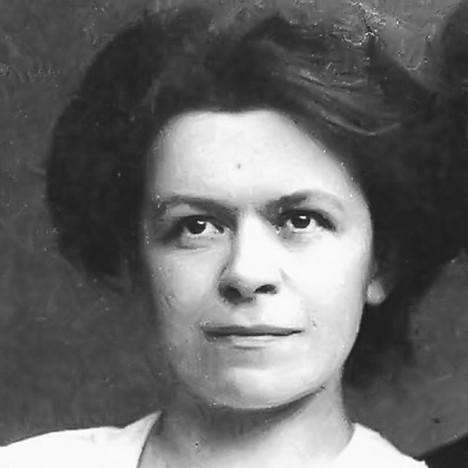Mileva Marić (Mileva Marić)

On December 19, 1875, Mileva Marić was born into a wealthy family in Titel in the Austro-Hungarian Monarchy (today Serbia) as the eldest of three children of Miloš Marić (1846–1922) and Marija Ružić–Marić (1847–1935). Shortly after her birth, her father ended his military career and took a job at the court in Ruma and later in Zagreb. She began her secondary education in 1886 at a high school for girls in Novi Sad, but changed the following year to a high school in Sremska Mitrovica. Beginning in 1890, Mileva Marić attended the Royal Serbian Grammar School in Šabac. In 1891 her father obtained special permission to enroll Marić as a private student at the all-male Royal Classical High School in Zagreb. She passed the entrance exam and entered the tenth grade in 1892. She won special permission to attend physics lectures in February 1894 and passed the final exams in September 1894. Her grades in mathematics and physics were the highest awarded. That year she fell seriously ill and decided to move to Switzerland, where on November 14, she started at the “Girls High School” in Zurich. In 1896, Marić passed her Matura-Exam, and started studying medicine at the University of Zurich for one semester.
In the autumn of 1896, Mileva Marić switched to the Zurich Polytechnic (later Eidgenössische Technische Hochschule (ETH)), having passed the mathematics entrance examination with an average grade of 4.25 (scale 1–6). She enrolled for the diploma course to teach physics and mathematics in secondary schools (section VIA) at the same time as Albert Einstein. She was the only woman in her group of six students, and the fifth woman to enter that section, an impressive feat at a time when women were not usually admitted. She would have had to have been extraordinarily talented to overcome the restrictions on the admission of women. She and Einstein became close friends quite soon. In October Marić went to Heidelberg to study at Heidelberg University for the winter semester 1897/98, attending physics and mathematics lectures as an auditor. She rejoined the Zurich Polytechnic in April 1898, where her studies included the following courses: differential and integral calculus, descriptive and projective geometry, mechanics, theoretical physics, applied physics, experimental physics, and astronomy.
She sat the intermediate diploma examinations in 1899, one year later than the other students in her group. Her grade average of 5.05 (scale 1–6) placed her fifth out of the six students taking the examinations that year. (Einstein had come top of the previous year’s candidates with a grade average of 5.7) Marić’s grade in physics was 5.5 (the same as Einstein). In 1900, she failed the final teaching diploma examinations with a grade average of 4.00, having obtained only grade 2.5 in the mathematics component (theory of functions). Einstein passed the exam in fourth place with a grade average of 4.91. Passing required a grade of 4 or higher. Mileva Marić’s academic career was disrupted in 1901 when she became pregnant by Einstein. When three months pregnant, she resat the diploma examination, but failed for the second time without improving her grade. She discontinued work on her diploma dissertation that she had hoped to develop into a PhD thesis under the supervision of the physics professor Heinrich Weber. She went to Novi Sad, where her daughter was born in 1902, probably in January. The girl was referred to in correspondence between the couple as Hansel before she was born and Lieserl after. Some sources say Lieserl was put up for adoption in Serbia, but others suggest she died in 1903.
Born
- December, 19, 1875
- Titel, Serbia
Died
- August, 04, 1948
- Zürich, Switzerland
Cemetery
- Friedhof Nordheim
- Zürich, Switzerland

